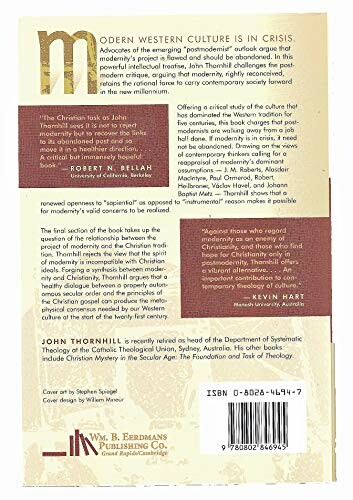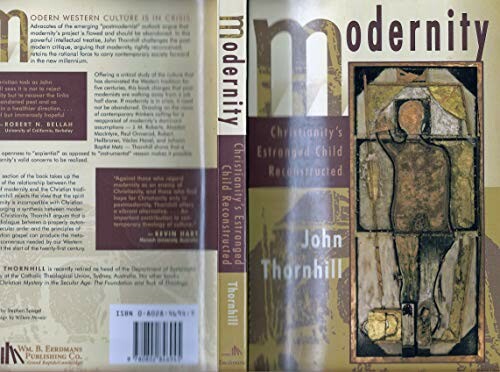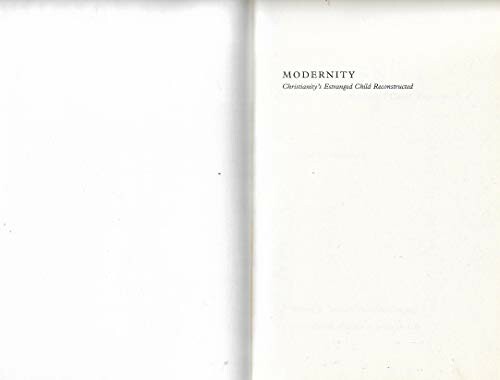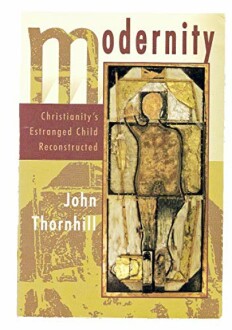Exploring Modernity: Christianity's Estranged Child Reconstructed
Key takeaways
- Explores the relationship between modernity and Christianity.
- Offers insights into philosophical and religious studies.
- Engaging writing style that appeals to a broad audience.
- Published in January 2000 with lasting relevance.
In a world where modernity often clashes with traditional beliefs, "Modernity: Christianity's Estranged Child Reconstructed" by John Thornhill presents a compelling exploration of this complex relationship. This thought-provoking book aims to bridge the gap between contemporary society and Christian philosophy, making it a must-read for those interested in understanding the nuances of faith in a modern context.
Delving into religious studies, this book raises essential questions about the role of Christianity in today's world. It serves as a guide for readers seeking to navigate the tension between faith and modern life, providing valuable perspectives that are as relevant now as they were at the time of publication.
About Modernity: Christianity's Estranged Child Reconstructed
"Modernity: Christianity's Estranged Child Reconstructed" is not just a book; it is an intellectual journey through the intricate ties between modernity and the Christian faith. John Thornhill deftly examines how modernity has influenced and challenged Christian beliefs, prompting readers to reflect on their own understanding of faith in a rapidly changing world.
Key Features
- In-depth Analysis: The book offers a thorough examination of philosophical concepts and their implications for modern Christianity.
- Engaging Narrative: Thornhill's writing style is accessible, making complex ideas understandable for a wide audience.
- Timeliness: Although published in January 2000, the themes explored remain relevant in today's societal context.
- Comprehensive Coverage: It covers a range of topics including the history of Christian thought and its evolution in a modern framework.
The book is structured to guide readers through its concepts effectively, making it suitable for both casual readers and those seeking a deeper understanding of the intersections between faith and modernity. The layout enhances comprehension, with each chapter building on the last, encouraging a thoughtful exploration of the material.

Design and Build Quality
With a sturdy paperback design, "Modernity" promises durability while maintaining an aesthetically pleasing look. The cover design is impactful, featuring a thought-provoking illustration that invites readers to ponder the book's subject matter. The quality of the pages ensures that the text is easy to read, making it comfortable for extended study sessions.
Ease of Use
The book is structured logically, with a clear introduction followed by well-defined chapters that make navigation simple. Each section includes summaries and thought-provoking questions, enhancing the reading experience and encouraging further reflection. Readers will appreciate the user-friendly approach that Thornhill has taken in presenting complex ideas.
Use Cases
This book is ideal for:
- Students: Those studying religious studies or philosophy will find valuable insights.
- Academics: Scholars seeking a nuanced understanding of modernity's impact on Christianity.
- General Readers: Anyone interested in the philosophical discourse surrounding faith and modern life.

By engaging with "Modernity," readers can expect to emerge with a richer understanding of how contemporary issues relate to age-old beliefs, making it a significant addition to any reading list on religion and philosophy.
 Check Current Price
Check Current Price
What makes this book stand out
Pros
- In-depth analysis of modernity's influence on Christianity.
- Engaging and accessible writing style that appeals to a wide audience.
- Relevant themes that resonate with contemporary societal issues.
- Well-structured chapters that enhance understanding and reflection.
- Ideal for a variety of readers, from students to general audiences.
Cons
- Some readers may find the philosophical concepts challenging.
- The book's focus is primarily on Christianity, which may not appeal to all.
- Published in 2000, some references may feel outdated to modern readers.
Overall, "Modernity: Christianity's Estranged Child Reconstructed" offers a wealth of knowledge and insights that can significantly enhance your understanding of the intricate relationship between faith and modernity. Its strengths far outweigh any minor drawbacks, making it a valuable addition to your reading collection.
Final Thoughts on Embracing Modernity
When considering the purchase of "Modernity: Christianity's Estranged Child Reconstructed," it's essential to keep a few tips in mind. Look for books that offer a balanced perspective and are written in an engaging style. Avoid overly complex texts that might alienate casual readers. It's also wise to consider how the book's themes resonate with current societal issues, ensuring that you're investing in literature that remains relevant.
In summary, "Modernity" provides an insightful exploration of the intricate relationship between modernity and Christianity. Its in-depth analysis and engaging narrative make it a compelling read for students, academics, and general readers alike. While some philosophical concepts may present challenges, the book's structure and thought-provoking questions facilitate a deeper understanding of the subject matter.
Overall, this book comes highly recommended for anyone seeking to navigate the complexities of faith in a modern context. With its rich insights and accessible writing, "Modernity" is a valuable addition to your collection, encouraging readers to reflect on their beliefs in today's world.
 Check Current Price
Check Current Price












